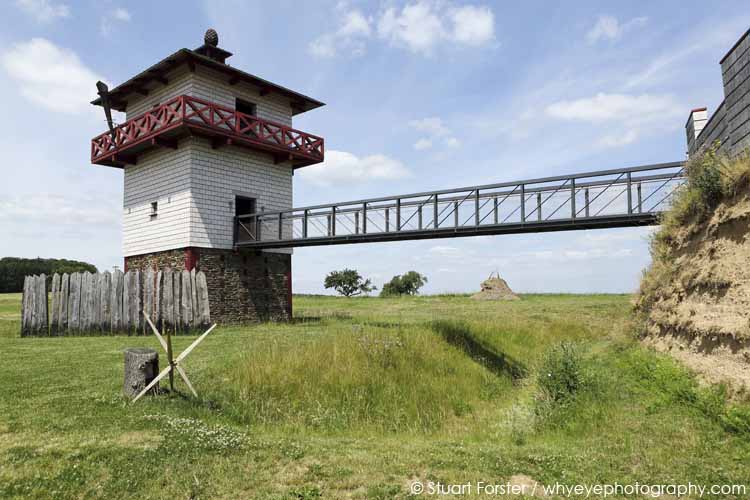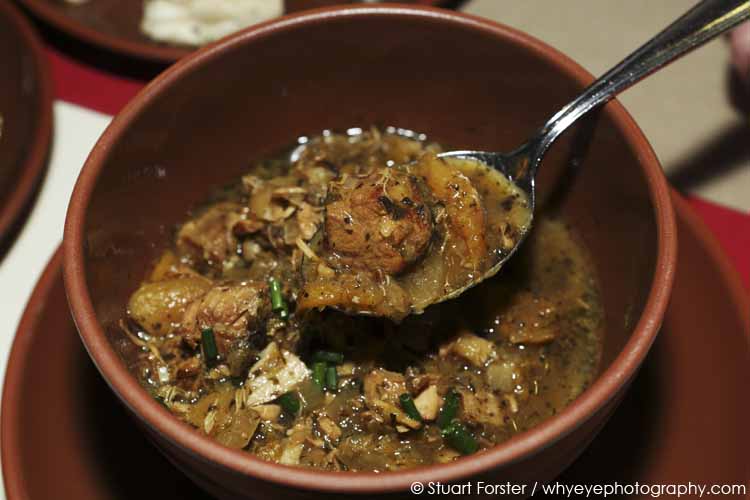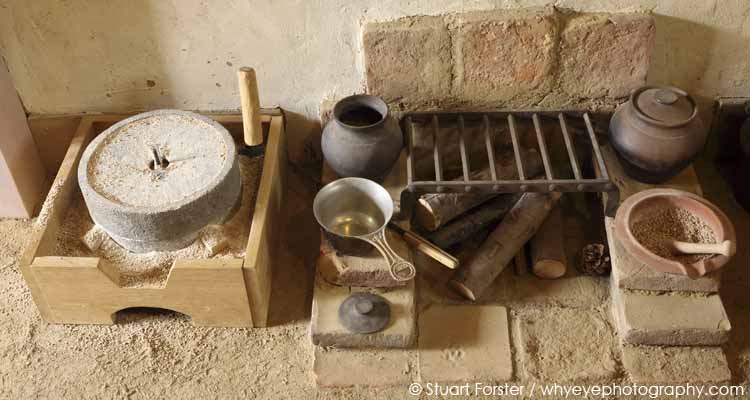Stuart Forster tries food inspired by an ancient recipe at Pohl Roman fortlet on the German Limes Strasse.
It’s lunchtime at Pohl in Germany’s Rhineland-Palatinate and the food being served is new to me. The recipes, though, were written down over 1,600 years ago. Today’s cuisine is Roman.
That’s fitting as I’m sitting in the café-restaurant of Pohl’s Roman fortlet, a reconstruction of one of the fortifications that marked the frontier of the Roman Empire in German territory from around 85AD to 260AD. The Upper Germanic-Rhaetian Limes runs 550km through the country, between Bad Hönningen on the River Rhine and Regensburg on the River Danube, and has been a UNESCO World Heritage Site since 2005.
Germany’s scenic Limes Road
A scenic tourist route, the Limes Strasse (meaning ‘Limes Road’), runs close to the site of the ancient frontier. The road runs for more than 700km and passes through more than 80 towns. I’m driving northwards along a section of the Limes Road.
Archaeological evidence of an earth and timber fortlet was first unearthed at Pohl in 1903. The replica that I’m in was built near the original site and opened on 1 October 2011. It’s now a community-run open-air museum.
Pohl’s reconstructed Roman fortlet
Care was taken to make the fortlet as authentic as possible. Wildflowers and long grass now grow on the earth ramparts forming the outline of the site. I’ll take a look at the main hall, barrack rooms and Pohl’s display of Roman artefacts after lunch. A tour of the site will have to wait. Even an army marches on its stomach, as Napoleon Bonaparte said.
I’m dining with Michael Rodschinka who normally works at the reconstructed Roman watchtower at Idstein. A similar tower stands outside of this fortlet. In excess of 1,000 watchtowers once stood along the Upper Germanic-Rhaetian Limes, which also featured a series of ditches, more than 90 forts plus either a palisade or three-metre high wall.

A Roman legacy in Germany
Mulsum, a slightly sweet, herby drink is served. It’s a blend of wine and honey and tastes reminiscent of mulled wine. Mr Rodschinka explains it was served to welcome guests or as an aperitif. To my surprise, he also tells me it was forbidden for women to drink wine in Roman times.
I hear how Roman demand for wine resulted in vines being planted in the Moselle Valley and Rhineland, regions that continue to produce wines.
The food is served on brown crockery, similar to that used by the Romans. The starter includes dates cooked in bacon jackets plus portions of lightly seasoned liver sausage and moretum, goat’s cheese with herbs. We spread them on freshly baked flatbread.
Roman food with a German twist
Mr Rodschinka tells me how the Romans would have integrated local ingredients into their diet. “There’s lots of hazelnuts in our region and to sweeten things they always used honey,” he adds. Fruit, such as apricots, was also used to sweeten dishes and provide flavour.
I hear how apples would have been served in autumn with pork. The troops based at Pohl would have been able to hunt wild boar.
The main course, Roman goulash, proves delicious. I’m so impressed that I ask the cook for the recipe. Thankfully, she was willing to share her secret.
Tucking in, I look forward to exploring the fortlet and getting my teeth into more of its history.

Recipe – Roman Goulash (Pork Ragout with Apricots)
The recipe originates from the Apicius cookbook, recipes collected and set down for posterity at around the turn of the 4th and 5th centuries – long after Imperial Rome’s authority had collapsed in Germany. Though the book lists ingredients it does not specify quantities, so if you want to experiment or change things to suit your palate then, of course, feel free to do so.
Paprika, which gives traditional Hungarian goulash its bite, is derived from the spicy capsicums that were introduced to Europe from the New World in Iberian ships during Early Modern times. Roman citizens would not have known them.
During the height of the Roman Empire black pepper would have been carried to Europe from the Orient and was an expensive, luxury item. Some economic historians suggest the eastward flow of gold and silver was a factor in Rome’s decline and fall. So, delicious as it is, perhaps dishes such as this one contributed to the abandonment of Pohl in the second half of the third century?
Ingredients
750 grams of chopped pork
Olive oil for frying
2 onions
¼ litre of white wine
60 ml of sherry or Marsala wine
100 grams of dried apricots
2.5 tablespoons of fish sauce
2.5 tablespoons of honey
2 tablespoons of vinegar
1.5 tablespoons of dried mint
1.5 tablespoons of cumin
1 tablespoon of chopped dill
½ tablespoon of crushed black pepper
Method
- Fry the pork in olive oil until it is brown. Set to one side.
- Fry the chopped onions in olive oil until they are clear then add the wine and fish sauce.
- Slowly stir in the fried pork and its juice.
- Crush and blend the spices using a pestle and mortar, then add them to the pan and braise for 30 minutes. Add water if necessary.
- Slice the apricots and add them with the honey, braising the mix until the meat is tender.
Serve with freshly baked bread.

Travel to Pohl
Pohl Roman fortlet (Kirchstrasse, 56357 Pohl) is in the Rhineland-Palatinate, 50 miles (80km) from Frankfurt International Airport. By car, the journey takes around 60 minutes. Follow the B260 from Wiesbaden in the direction of Koblenz.
Further information
See the Pohl Roman fortlet website for information (in German) on opening times and entry prices.
View the German Limes Road website for further information on its route and history.
For more about the country as a whole take a look at the German National Tourist Board website.
Photos illustrating this post are by Why Eye Photography.
If you enjoyed this post why not sign up for the free Go Eat Do newsletter? It’s a hassle-free way of getting links to posts on a monthly basis.
‘Like’ the Go Eat Do Facebook page to see more photos and content.



